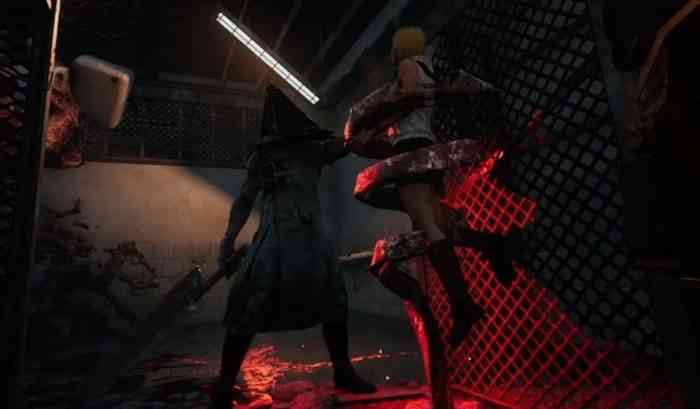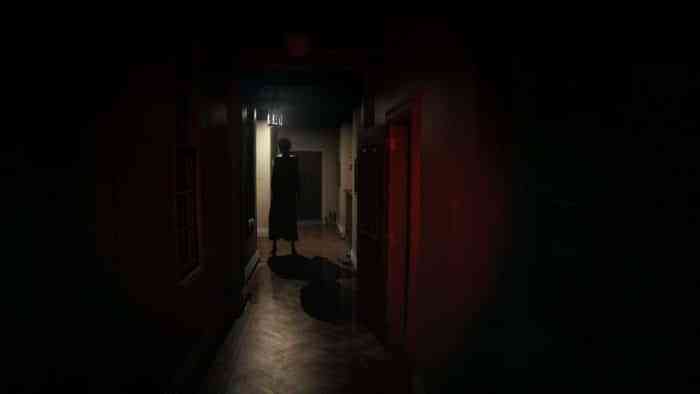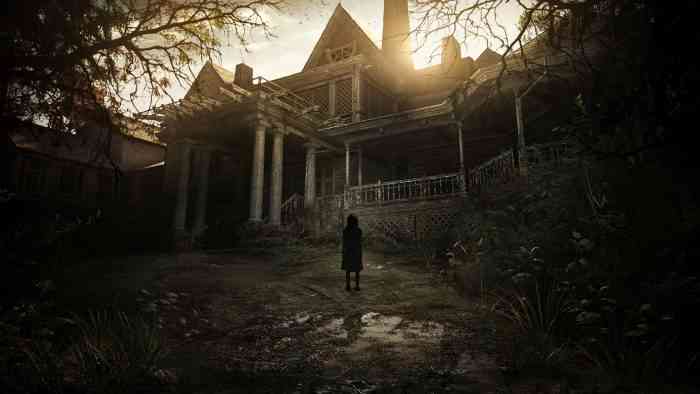COG Considers: The Rise, the Fall, the Legacy
Today on COG Considers, I am going to talk about a gaming franchise that I love dearly–one stolen from us in its prime. Cut down just as it was beginning to spread its wings and reduced to little more than a series of pachinko games, a hollow shell of its former self. No, I’m not talking about Castlevania here–that will wait for another time. We already discussed P.T., the revenant which looms over modern horror games. Now it’s time to shed some light on the lost love we wanted to see in P.T. I am talking, of course, about Silent Hill.
If you aren’t familiar with the franchise, then you are in for a horrifying retro treat. If Resident Evil coined the term ‘survival horror,’ then Silent Hill perfected it. With this series, Konami took their hardware limitations and crafted a nightmare. Thick fog hid the PS1’s poor draw distance. Clunky controls added to the feeling of helplessness. Combat was especially terrible, giving you good reason to turn and run if you encountered something. All of this plus a deliberately surreal environment, nightmarish monster designs, creepy story about a cult that sacrifices children, and characters just relatable enough to put you firmly in protagonist Harry Mason’s shoes created an incomparable atmosphere of tension. Then Silent Hill 2 came out, and the rest is history.

Everything that Silent Hill 1 did, the sequel improved on. Better graphics mean more opportunities for seemingly normal cutscenes to send an irrational chill down your spine. Monsters going from simply scary to absolutely terrifying make the player even more fearful of entering combat. And the story–well. Everyone knows the main appeal of Silent Hill 2 is the atmosphere, but that feeds directly into the slow, dawning horror of realizing this game isn’t telling about what you thought it was. Where Harry’s story was based in a father’s desperation to protect his daughter from otherworldly forces, there’s nothing supernatural about James’ tragedy. Then you have the multiple endings, with their inscrutable judgments based on how many times you looked at James’ deceased wife Mary’s letter, whether or not you listened to key pieces of dialogue in full, how you treated other characters, how you treated yourself…
Forgive me. You didn’t come here to listen to me ramble about why Silent Hill 2 is still excellent all these years later. Besides, as much as I love Silent Hill 3 and 4, the ride has reached its peak. It’s all downhill from here. And if you’ve played these games, you probably know why. There are three cardinal sins of Silent Hill and they brought the franchise crashing down after just four games. They are: the cult plot, the increased focus on combat, and the shift from creeping dread to explaining that which was never meant to be explained.

You Can’t Kill an Idea, But You Can Kill a Franchise
Yeah, that’s right. The cult plot. Fan outcry brought it back in Silent Hill 3, and that turned what was supposed to be the darkest game in the series into… well, Silent Hill 3. It’s a good game. There’s nothing wrong with it, and Heather Mason is certainly an endearing protagonist. But like her father before her, her story is ultimately one of innocent humans caught up in supernatural horror. Which is fine! It’s a solid concept and it’s been the backbone of many horror games over the years. It just doesn’t hold up next to James’ self-made purgatory. Yes, being dragged into a nightmarish alternate world by a cult determined to make you the mother of their wicked god is awful, but it’s an external kind of awful. The phone call is coming from outside the house. There’s nothing wrong with you. Even some of the monsters seem less terrifying in the context of Heather’s journey, and that’s because those monsters don’t belong to her. Pyramid Head and the twitching, faceless nurses don’t quite fit Heather’s nightmare because it was never her twisted psyche they were meant to reflect.

In the end, what it comes down to is a simple but unpleasant truth: Silent Hill is at its best when it isn’t holding your hand. Some games (Outlast. I’m talking about Outlast.) hit their peak when they’re showing you all the disgusting details, but the strength of Silent Hill is and has always been the sense of dawning horror as you put the pieces together yourself. This is why Mary’s letter is so powerful. This is why Pyramid Head is such an iconic symbol. This is why I can’t get the image of Henry Townshend staring at his own mutilated ghost through the peephole of his locked apartment out of my head.
Silent Hill 2 does this the best, which is why it’s the game that everyone remembers, but all four of the main games are designed to make you, the player, figure out what’s going on through surreal character interactions and careful exploration. The cult plot weaves into this best in Silent Hill 4, where you spend most of the game trying to figure out who Walter Sullivan is and why his ghost is trying to kill you, and that’s because Silent Hill 4 makes the cult plot personal. You aren’t a random shmuck or the subject of a terrible prophecy. You’re someone that Walter, the new face of the cult, sees himself in. He wants you to know his story. That way, it will matter more when he kills you. Your own curiosity is feeding the danger and forming the heart of a connection between you and the monster. Still an outside threat, but suddenly things are too close for comfort.
Unfortunately, the later games in the series forgot this. Silent Hill: Origins does imply terrible things about protagonist Travis, but it’s completely overshadowed by the cult plot. Silent Hill: Homecoming made its protagonist a career soldier because better melee combat would definitely fit with the series’ atmosphere. Silent Hill: Downpour tried to lean on the lessons of Silent Hill 2, but made the mistake of assuming that it was okay to make the horrible truth about your player character optionable. Don’t worry, it told us, your actions in the present determine who you were in the past. You will only have committed a terrible crime if you are a jerk. Otherwise, you’re an innocent man caught in circumstances beyond your control. It’s the cult plot without the cult, and I am not impressed. Neither was the rest of the franchise’s audience. And so the Silent Hill franchise, beloved but exhausted, was laid to rest…

…but its legacy lives on.
True Horror Never Dies
We live in a time of incredible leaps in technology. This means that big-budget AAA games are getting downright gorgeous, but all those pretty pixels come with a cost: tension and storytelling. The smothering fog of early Silent Hill was born of hardware limitations that simply don’t exist anymore–at least, not for horror games. But even as the big-budget horror fades into obscurity, the indie horror scene is booming, and most great titles grew out of Silent Hill. Amnesia: The Dark Descent gave us claustrophobic hallways, clinging shadows, monsters that flat-out can’t be fought, and the increasing certainty that we are not playing as a good person. Amnesia has more outright jump scares than Silent Hill, but its shifting architecture and horrifying puzzles would feel right at home in the abandoned resort town of Silent Hill. More importantly, so would its crushing atmosphere.
Outlast took things a step further despite positioning itself much more firmly in reality than its predecessors. No ambiguously-living town or cosmic horrors here, just an asylum full of people at the mercy of a callous mega corp experimenting on the patients. Once again, the focus on poor visibility–in this case, pitch-black sections which you must navigate through the night vision mode of your camcorder–and the inability to effectively fight your attackers creates a similar tense atmosphere and sensation of powerlessness. But where Silent Hill shines in surreal uncertainty, Outlast is a game that pushes limits with what it will show you. Miles Upshur loses his fingers, his mind, and ultimately his humanity; DLC protagonist Waylon Park may have it even worse. The outside threat is made personal by the knowledge that you made it personal. Neither Miles nor Waylon would be in danger if they’d just kept their heads down and their mouths shut. The call is coming from someone else’s house, but you’re the one who broke in and picked up.

Then there’s P.T. Not technically an indie game, but if you’re going to talk about Silent Hill‘s legacy, you have to mention P.T. at least once. It’s a rule. P.T. took the first-person zero-combat horror approach that Amnesia and Outlast made famous and applied it to photo-realistic graphics, a house of never-ending hallways, and Silent Hill‘s trademark eerie soundtrack. The results speak for themselves. For the first time in years, it seemed that Silent Hill might come back and be good again. Gamers around the world are still in mourning for the reboot that never came. I’ll admit my feelings are more mixed, but that’s probably because I never got the full context of the story behind P.T., and story really is what makes or breaks horror for me. I can tolerate a lot of flaws in gameplay and execution if the writing is sound.
Speaking of flawed execution and questionable gameplay, let’s talk about Resident Evil. Yes, you heard me–even Resident Evil, the unquestioned king of big-budget horror, owes something to Silent Hill. Specifically, Resident Evil 7: Biohazard, the game designed to bring the increasingly actionized franchise back to its survival horror roots, owes something to Silent Hill. RE7 uses a first-person camera similar to P.T. and Outlast and builds a tense atmosphere through foreboding environments with limited visibility. Since it’s a Resident Evil game, it does feature much more combat than any of the other games on this list, and it also leans much further into the idea of an outside threat with its titular biohazard, but those are staples of the RE franchise. I’m not going to criticize RE for being RE. I am going to criticize it for shamelessly borrowing exactly the same starting point as Silent Hill 2, though. Come on. Ethan Winters gets a cryptic message from his supposedly-dead wife asking him to come to an isolated location? Color me suspicious.

These are just a few of the successors to Silent Hill‘s legacy. Trust me when I say there are many, many more. Games like UniDotStudio’s MORFOSI, where you can’t fight back against the thing chasing you and must avoid it based on sound cues. Games like Fummy’s The Witch’s House, which place you in the shoes of a character that isn’t who–or what–you think they are. Games where the environment, the monsters, and the gameplay itself is somehow linked to your player character’s condition. These games would not exist without Silent Hill. If you’ve ever played, been scarred by, and loved a horror game like this, then you too have been touched by Silent Hill.
Word on the net has it that we may finally see a new Silent Hill game this year. A reboot, even. There’s a chance this is going to be something brilliant, but I’m not holding my breath. Konami has burned me too many times before, and if I’m honest, I don’t need a new Silent Hill game. The franchise may be dead, but Silent Hill is still alive and well in the form of the entire genre of psychological horror games it spawned. Maybe Konami will surprise us and the reboot will be brilliant. Who can say how these things will turn out? Not me. The only thing I know for certain is that these words from Mary’s letter still ring true:
“In my restless dreams,
I see that town.
Silent Hill.”